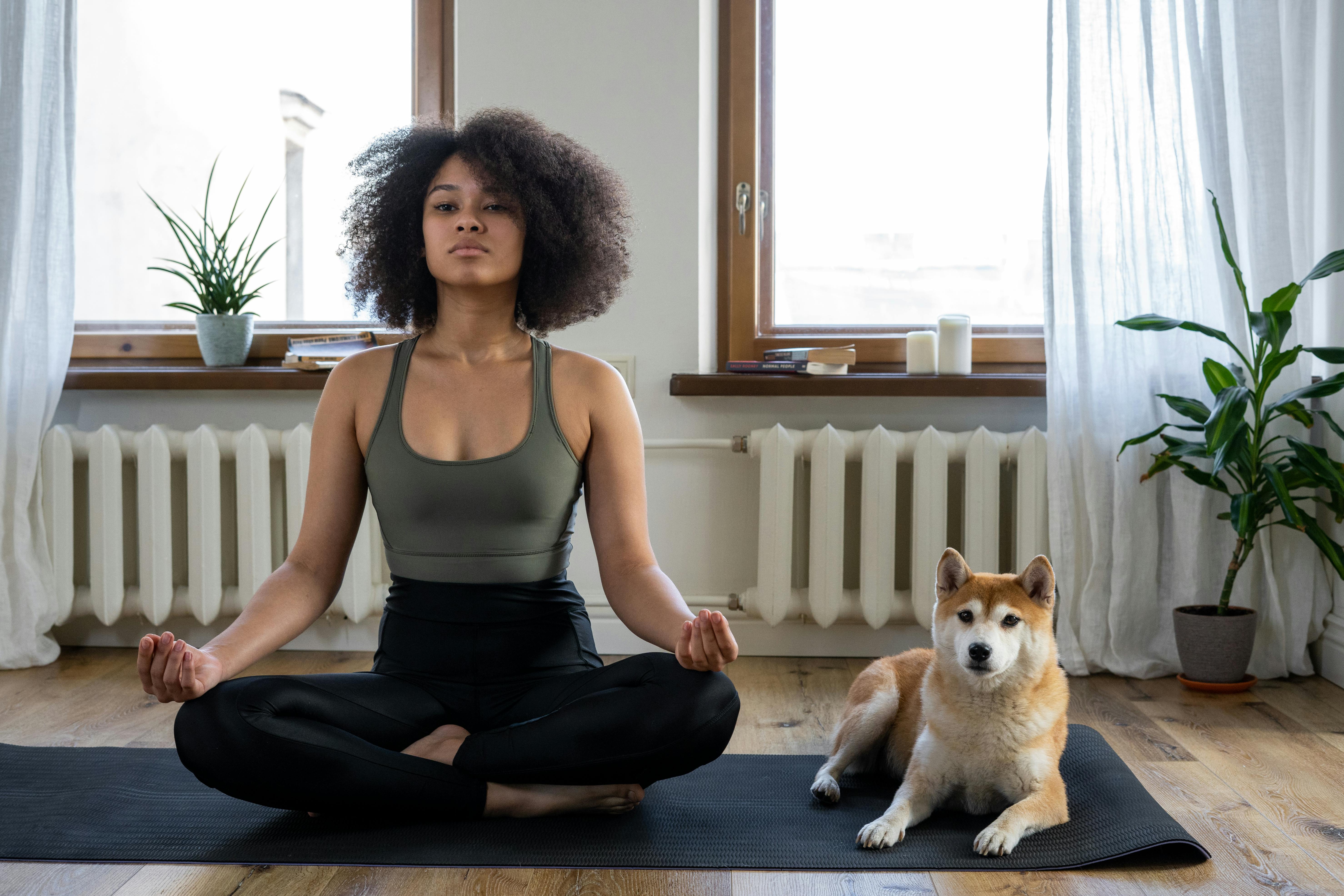In our fast-paced world, stress has become an unwelcome constant for many. According to various health organizations, chronic stress can lead to a myriad of physical and mental health issues, from anxiety and depression to heart disease. Finding effective ways to manage this stress is crucial for overall well-being. While many stress-relief methods come with a price tag, there are countless free hobbies that can significantly reduce your stress levels, improve your mood, and boost your mental resilience.
This guide will explore seven accessible and completely free hobbies you can adopt starting today. We’ll delve into how each activity contributes to stress reduction, offering practical tips to get started. Prepare to discover new passions that not only enrich your life but also serve as powerful tools against the daily grind.
1. Embrace Nature Walks and Hiking
Stepping into nature is one of the most profound ways to alleviate stress. Whether it’s a leisurely stroll through a local park or a more vigorous hike on a forest trail, spending time outdoors has a calming effect on the mind and body. The fresh air, natural sounds, and scenic beauty can significantly lower cortisol levels, the body’s primary stress hormone.
The Science of Green Spaces
Research consistently shows that exposure to natural environments can reduce rumination, improve mood, and enhance cognitive function. The concept of “forest bathing” (Shinrin-yoku) from Japan highlights the therapeutic benefits of simply being present in a forest environment. It’s not about strenuous exercise, but about mindfully engaging your senses with nature.
Tip: Start with short walks in your neighborhood park. Gradually explore longer trails as you feel comfortable. Leave your phone on silent or at home to fully immerse yourself in the experience.

2. Dive into Reading
Reading is a powerful escape that can transport you to different worlds, offering a much-needed break from daily stressors. Just six minutes of reading can reduce stress levels by up to 68%, according to a study by the University of Sussex. It’s more effective than listening to music or taking a walk, as it requires the mind to focus, diverting attention from anxieties.
Accessing Free Books
You don’t need to spend money to enjoy reading. Public libraries offer an extensive collection of books, magazines, and even audiobooks, all free with a library card. Many libraries also provide access to digital platforms like Libby or OverDrive, allowing you to borrow e-books and audiobooks directly to your device. Additionally, websites like Project Gutenberg offer thousands of free public domain books.
- • Fiction: Lose yourself in a captivating story.
- • Non-fiction: Learn a new skill or explore a fascinating topic.
- • Poetry: Engage with language in a calming, reflective way.
3. Practice Journaling
Journaling is a highly effective, free, and private way to process thoughts and emotions. It provides an outlet for feelings that might otherwise remain bottled up, leading to increased stress. The act of writing can bring clarity, help identify stress triggers, and even facilitate problem-solving.
Different Approaches to Journaling
There’s no single right way to journal. You can simply write about your day, explore specific feelings, or use prompts to guide your reflections. The key is consistency and honesty. Even 10-15 minutes a day can make a significant difference.
“Journaling is like meditation for the mind. It allows you to declutter your thoughts and gain perspective on your experiences, which is vital for stress management.”
Consider a gratitude journal, where you list things you’re thankful for each day. This practice shifts your focus from negative thoughts to positive aspects of your life, fostering a more optimistic outlook.

4. Explore Meditation and Mindfulness
Meditation and mindfulness are ancient practices that have gained widespread recognition for their profound stress-reducing benefits. They involve focusing on the present moment, observing thoughts and feelings without judgment, and cultivating a sense of calm and awareness. These practices can rewire the brain, reducing activity in the amygdala (the brain’s fear center) and strengthening areas associated with attention and emotional regulation.
Getting Started with Mindfulness
You don’t need special equipment or a guru to meditate. Many free resources are available online, including guided meditations on YouTube or through free apps. Start with just 5-10 minutes a day, focusing on your breath. The goal isn’t to stop thinking, but to observe your thoughts without getting carried away by them.
Resource: For more insights into the benefits of mindfulness, consider exploring resources from the Mindful.org “Getting Started” guide, which offers practical advice for beginners.
5. Engage in Drawing or Sketching
Artistic expression, even simple doodling, can be incredibly therapeutic. Drawing or sketching allows you to channel your focus into a creative outlet, diverting attention from stressful thoughts. It doesn’t require artistic talent; the process itself is what’s beneficial. It’s about expressing yourself and enjoying the act of creation, not producing a masterpiece.
Free Tools and Techniques
You can start with just a pen and paper. If you have access to a computer or tablet, free digital drawing software like Krita or Autodesk Sketchbook offers a wide range of tools. Experiment with different styles, from abstract shapes to realistic sketches. The goal is to find what feels relaxing and enjoyable for you.
Here’s how drawing can help:
- • Mindful Focus: It requires concentration, pulling you into the present moment.
- • Emotional Release: It can be a non-verbal way to express complex emotions.
- • Sense of Accomplishment: Completing a drawing, no matter how simple, provides a sense of achievement.
6. Listen to Music
Music has a profound impact on our emotions and physiological state. Listening to calming music can lower heart rate, blood pressure, and cortisol levels, promoting relaxation. It can also evoke positive memories and feelings, providing a powerful antidote to stress.
Curating Your Stress-Relief Playlist
Most streaming services offer free, ad-supported versions, allowing access to vast libraries of music. Explore genres known for their calming effects, such as classical, ambient, lo-fi, or nature sounds. Create playlists specifically for relaxation, focus, or sleep. The key is to find music that resonates with you and helps you unwind.

7. Engage in Bodyweight Exercises or Stretching
Physical activity is a well-documented stress reliever. Even without gym memberships or equipment, you can engage in effective bodyweight exercises and stretching routines that release endorphins, improve mood, and reduce tension. This hobby is completely free and can be done anywhere, anytime.
Simple Routines for All Levels
Start with simple stretches to increase flexibility and release muscle tension. Yoga and Pilates-inspired bodyweight routines are also excellent for both physical and mental well-being. Many free tutorials and guided sessions are available on platforms like YouTube, catering to all fitness levels.
Example Routine:
- 1. Neck Rolls: Gently roll your head from side to side.
- 2. Shoulder Shrugs: Lift shoulders to ears, then release.
- 3. Cat-Cow Stretch: On hands and knees, arch and round your back.
- 4. Leg Swings: Stand and gently swing each leg forward and backward.
- 5. Child’s Pose: A resting yoga pose that calms the nervous system.
Perform each for 30-60 seconds, focusing on your breath.

Comparing Stress-Relief Hobbies
To help you choose the best hobby for your needs, here’s a quick comparison of the benefits each offers:
| Hobby | Primary Benefit | How it Reduces Stress |
|---|---|---|
| Nature Walks | Physical activity, mental clarity | Lowers cortisol, improves mood, connects with nature. |
| Reading | Mental escape, cognitive engagement | Distracts from worries, reduces heart rate. |
| Journaling | Emotional processing, self-reflection | Provides emotional outlet, clarifies thoughts. |
| Meditation | Mindfulness, inner peace | Calms nervous system, improves emotional regulation. |
| Drawing/Sketching | Creative expression, focused attention | Engages mind creatively, provides sense of flow. |
| Listening to Music | Emotional regulation, relaxation | Lowers heart rate, evokes positive emotions. |
| Bodyweight Exercise | Physical release, endorphin boost | Reduces muscle tension, releases feel-good hormones. |
Finding a hobby that resonates with you is a personal journey. The most important aspect is to choose an activity you genuinely enjoy, as this will ensure consistency and maximize its stress-reducing benefits.
Conclusion: Cultivating Calm, One Hobby at a Time
Stress is an inevitable part of modern life, but its impact doesn’t have to define your well-being. By incorporating free hobbies into your routine, you can build a powerful defense against daily pressures. From the tranquility of a nature walk to the focused calm of meditation, these activities offer accessible pathways to a more balanced and peaceful life.
Remember, the goal isn’t perfection, but consistency. Even short bursts of engagement with these hobbies can yield significant benefits over time. Start small, experiment with different activities, and observe how your mind and body respond.
Ready to Unwind?
Which of these free hobbies will you try first to bring more calm into your life? Share your thoughts and experiences in the comments below!
For further reading on stress management and mental well-being, consider these resources:
- • American Psychological Association – Stress: Provides comprehensive information on stress and its effects.
- • HelpGuide.org – Stress Management: Offers practical strategies for coping with stress.
